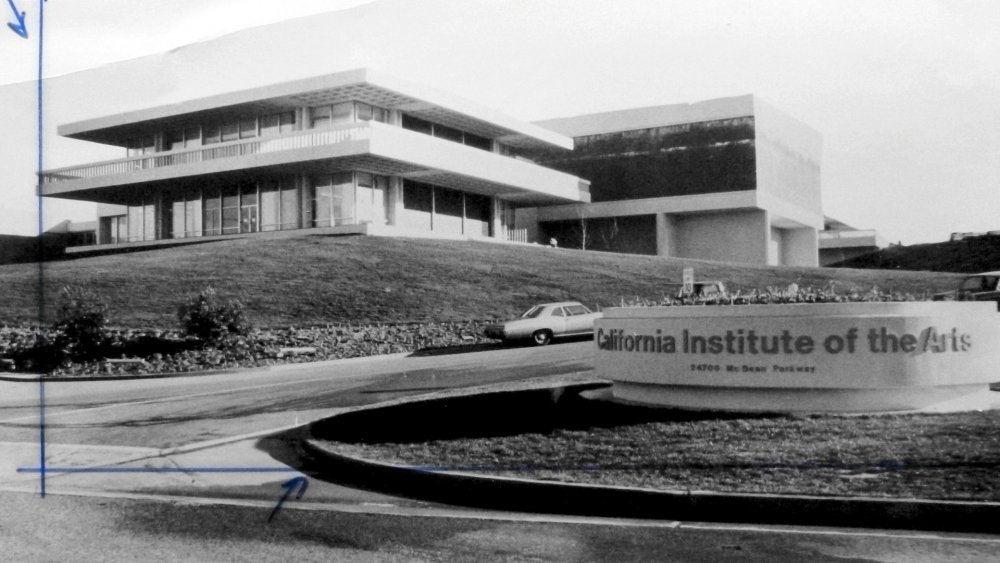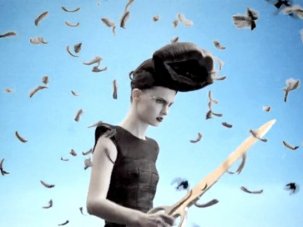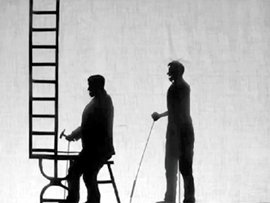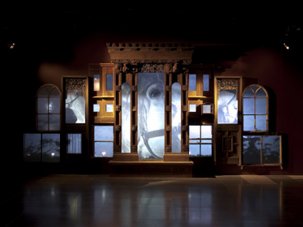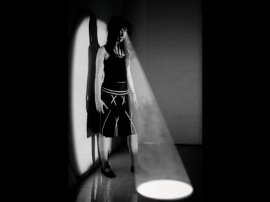Web exclusive
For the past several months the online streaming platform Vdrome.org has been screening artists’ films, one at a time, for a week each, then taking them down. Set up by Italian art magazine Mousse, Vdrome has so far shown work by artist-filmmakers like Ben Rivers, Nathaniel Mellors, Beatrice Gibson, Hassan Khan and other high-profile and emerging gallery artists.
Right now it’s a work by Redmond Entwistle, Walk Through, that’s streaming. It’s an artist’s film about art school, in this case the venerable California Institute of the Arts (CalArts), and specifically its visual arts department.
In the late 60s CalArts became famous for pioneering ‘post-studio’ artistic practice through its long-running series of workshops of the same name. Started in the early 1970s by conceptual artist John Baldessari, then taken over by Michael Asher in the late 70s, the class tried to reconfigure traditional modes of learning, with the teacher helping the students start to teach themselves rather than simply lecturing them. Broadly speaking, this was part of the ascendant conceptualism of art-making that became popular at that time (or at least, it became popular to talk about art in terms with the prefix ‘post-’).
In the late 90s Entwistle attended the post-studio ‘crits’ – art-school jargon for a tutor-led group-criticism session in which students speak about each other’s work, general thoughts about art and its production. Entwistle’s film features a group of people speaking about their memories of attending these intensive discussions, usually lasting at least six hours.
Vdrome.org itself represents a shift away from pile-em-high, all-you-can-eat online curation, found at sites like the monolithic Ubuweb. Its focused and short single streamings are events, accompanied by a framing text by or interview with a curator or writer. Up until recently commercial gallery artists have been reluctant to put their movie work online, worried it might undercut their salesmen (gallerists with connections to rich patrons, the former generally taking a 50 per cent cut of sales) through the perceived devaluation of mass availability.
Entwistle’s film looks at people hoping to embark on artistic careers – though the great majority of art-school graduates will never make a living through their art alone. Roughly speaking, the era that included Baldessari and stretched through Asher’s time encompasses the rise and consolidation of conceptual art into the art-history canon. This was a time when the traditional art market of objects like painting and sculpture was challenged by an expanded field of art production encompassing all types of ephemeral, seemingly uncollectable art.
As it turned out, even these things, no matter how fleeting or disembodied, could be collected, stored away and capitalised upon. Vdrome sits in an interesting position: the films are framed as in an arthouse cinema or gallery, but given away for all with a broadband connection to see – though via a private Vimeo account that can only be embedded on the Vdrome site. Here, it’s the framing that’s aura-building.
All of the artists in Entwistle’s film can open a free Vimeo account, but whatever they put there won’t have the same value as it would if it were shown in a gallery. From one perspective this is novel – the value of the film or artwork isn’t based on restricting the amount of viewers the work has. At the same time it’s a reiteration of a traditional way of value-building, closer to that of mass media like Hollywood and television than the old art market.




